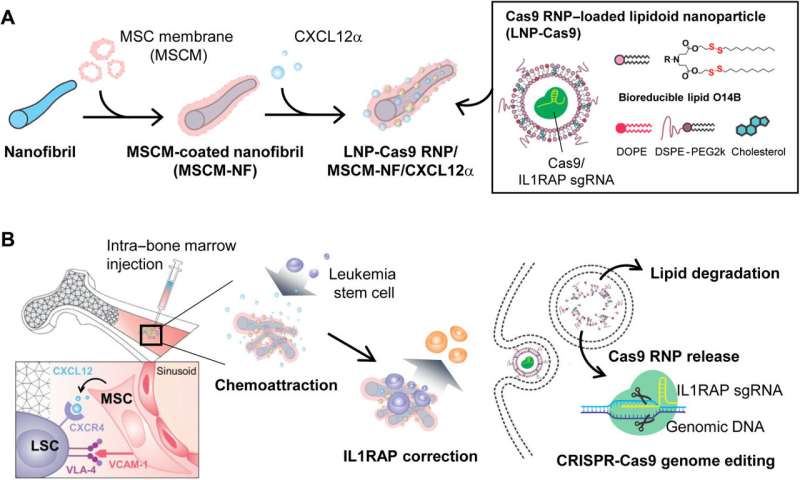Leukemia treatment can bait and capture cells in hiding, research shows

The latest method under investigation to attack leukemia is a bit like exterminating cockroaches: It's a three-step process using cutting-edge technology to bait, trap, and kill leukemia cells at their root.
A paper published in Sciences Advances, led by Wilmot Cancer Institute researchers, describes the process and the significance for patients who face acute myeloid leukemia (AML), an aggressive type of blood cancer in which only 28 percent of people survive five years.
Although the research is early—it has only been tested in mice and in human cell cultures—it's quite different from standard methods such as chemotherapy because it allows scientists to deliver treatment that can correct faulty genes that fuel the cancer, said Tzu-Chieh (Kate) Ho, Ph.D., the paper's first author and a research assistant professor in Hematology/Oncology at Wilmot.
Her mentor, Michael Becker, M.D., dean's professor of Hematology/Oncology at Wilmot, is co-corresponding author.
Ho's system to reach the root of leukemia uses CRISPR technology, which can edit genes inside a cell. In the article, she describes a novel way of baiting leukemia stem cells out of hiding, and then destroying them with a protein-RNA complex that enters the nucleus of the cancer cells and edits them so that they cannot survive.
Being able to target leukemia stem cells is important; the disease is known to relapse even after a long remission, as stem cells awaken from dormancy. For this reason, modern science is geared toward using the most advanced materials to seek and directly wipe out the stem cell population.
When Ho was conducting research toward her doctorate degree at the University of Rochester Medical Center several years ago, she discovered an important protein, IL 1RAP, on the surface of leukemia-initiating cells that could be a target for anti-cancer drugs.
Ho went on to Memorial Sloan Kettering and Columbia University in New York, to develop innovative mouse models and biomedical engineering materials that can deliver drugs more efficiently and directly to protein targets such as IL 1RAP. A year ago, she returned to Wilmot to work in Becker's lab, which has been studying malignant leukemia stem cell populations for several years.
"We are grateful to have Dr. Ho and look forward to more exciting developments in the near future," Becker said.
Clinical trials in patients are still a couple of years away. Researchers are also developing relationships with drug companies to find agents that can target the IL 1RAP protein.
More information: Tzu-Chieh Ho et al, Scaffold-mediated CRISPR-Cas9 delivery system for acute myeloid leukemia therapy, Science Advances (2021). DOI: 10.1126/sciadv.abg3217


















